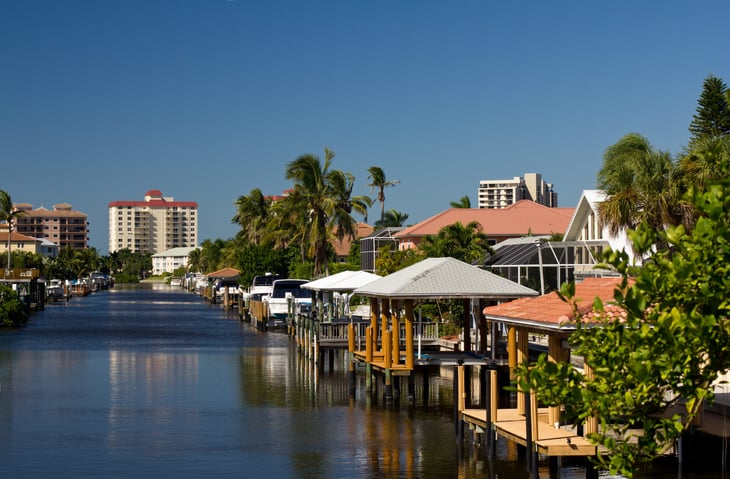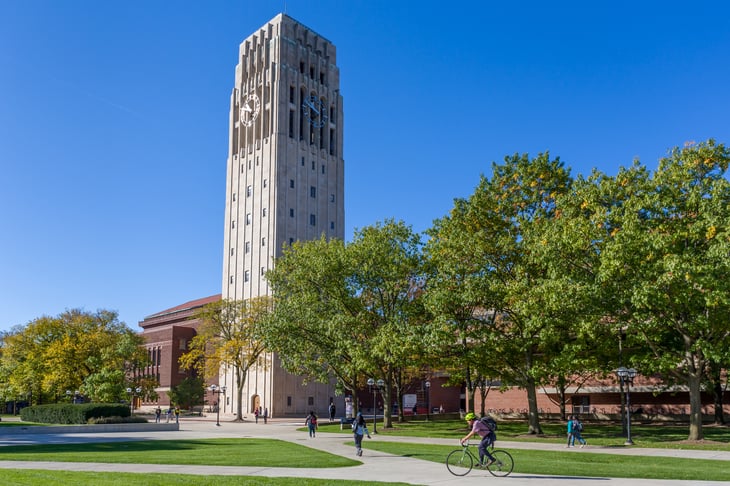
Editor's Note: This story originally appeared on SmartAsset.com.
While the COVID-19 pandemic hit millions of Americans in their wallets, it also created a surge of new retail investors looking to capitalize on stock market volatility.
A survey conducted by the FINRA Investor Education Foundation and National Opinion Research Center at the University of Chicago found that 57% of respondents opened a taxable investment account in 2020. Those who never had an investment account before were generally younger, earned lower incomes and were more racially or ethnically diverse than established investors.
With retail investing becoming more popular, SmartAsset used the most recently available data to identify and rank the top places in the U.S. where people have been investing more. This is our second annual study on places where residents invest more. Check out our 2020 edition here.
To do so, we analyzed 198 metro areas across various metrics related to taxable interest, ordinary dividends, qualified dividends and capital gains. For details on the data sources we used and how we put all the information together to create our final rankings, read the data and methodology section at the end.
Study Definitions

Definitions for the four types of investment income we discuss in this article are as follows:
- Taxable interest. This is the interest generated from lending money to someone else. For most people, this is the interest from savings accounts, checking accounts and certificates of deposit (CDs) – all of which count as loans to a bank or other financial institution.
- Ordinary dividends. This is income earned from owning stock in a company. Ordinary dividends are taxed as ordinary income.
- Qualified dividends. Qualified dividends have been owned long enough to meet the IRS holding period qualification and are taxed at capital gains rates.
- Capital gains. This is income earned from selling capital assets, which typically includes stocks and bonds, but can also include your home or your car.
1. Nashville-Davidson-Murfreesboro-Franklin, TN

The Nashville area, which failed to crack the top 25 last year, is now the metropolitan area where residents are investing the most. Investors in Nashville and its surrounding areas saw average taxable interest jump 46.17% between 2014 and 2018, the seventh-largest increase in the study for this metric.
The percentage of tax returns that reported qualified dividends also increased by 1.08% over the four-year period that was studied, the ninth-largest jump for this metric.
Additionally, the greater Nashville area had the 10th-largest four-year change in average qualified dividends (39.49%) and the 10th-largest four-year change in the percentage of returns reporting ordinary dividends (1.17%).
2. Crestview-Fort Walton Beach-Destin, FL

The Crestview-Fort Walton Beach-Destin area in the Florida Panhandle recorded the fourth-largest change in average ordinary dividends, which increased 52.77% between 2014 and 2018.
This coastal metro area also saw the fifth-largest four-year increase in average qualified dividends across the study (61.86%).
Meanwhile, 1.04% more investors in the Crestview-Fort Walton Beach-Destin metro reported capital gains on their tax returns in 2018 than in 2014, the ninth-largest increase for that metric.
3. Wilmington, NC

The Wilmington, North Carolina, metro area ranks sixth for its four-year change in percentage of tax returns showing capital gains (1.48% increase).
Wilmington is also seventh for its four-year increase in both the percentage of returns with qualified dividends (1.32%) and the percentage of returns with ordinary dividends (1.37%).
4. Boulder, CO

The Boulder, Colorado, metro area saw a 5.02% jump in the percentage of returns that reported taxable interest in 2018 when compared to 2014, the fifth-largest increase for this metric.
The share of tax returns that included ordinary dividends increased by 1.58% between 2014 and 2018 (the sixth-highest), while Boulder also saw a 1.36% increase in the percentage of returns that included qualified dividends (also the sixth-highest).
5. Charlottesville, VA

The Charlottesville, Virginia, metro area ranks third for its four-year increase in tax returns with qualified dividends (1.90%) and third for its four-year increase in returns that reported capital gains (1.77%).
Meanwhile, the Charlottesville area saw the percentage of tax returns that included ordinary dividends jump 1.90% between 2014 and 2018, the fourth-largest increase for this metric.
6. San Francisco-Oakland-Hayward, CA

The San Francisco-Oakland-Hayward metro area in California ranks third for its four-year change in percentage of returns with ordinary dividends (1.93%).
Between 2014 and 2018, the number of tax returns that included capital gains jumped 1.68%, while the number of returns that reported qualified dividends increased by 1.77%, fourth-highest for both metrics.
7. Naples-Immokalee-Marco Island, FL

In the Naples-Immokalee-Marco Island metro area in Florida, 1.13% more tax returns included qualified dividends in 2018 than in 2014, the eighth-largest jump within that metric.
This South Florida metro area also saw the share of tax returns that reported ordinary dividends increase by 1.17% during the same four-year timeframe, the ninth-largest jump for the metric.
8. Ann Arbor, MI

The Ann Arbor, Michigan, metro area saw the 16th-largest increase (0.69%) in the percentage of returns that included qualified dividends between 2014 and 2018.
Home to the University of Michigan, Ann Arbor also had the 18th-largest increase in tax returns showing ordinary dividends (0.77%) during the same timespan.
9. Charleston-North Charleston, SC

In the Charleston, South Carolina, metro area, average taxable interest jumped 54.96% between 2014 and 2018, the third-largest increase across all 198 metro areas in our study.
Meanwhile, the percentage of tax returns that included capital gains grew by 1.31% over the same four-year time period, the eighth-largest increase for that metric.
Charleston also ranks 11th for its four-year change in percentage of tax returns showing qualified dividends (0.94%).
10. Birmingham-Hoover, AL

The Birmingham-Hoover metro area in Alabama takes the No. 10 spot out of the 198 metro areas we studied.
Birmingham-Hoover had the 17th-largest percentage point increases in both tax returns showing qualified dividends (0.65%) and returns showing capital gains (0.84%) between 2014 and 2018.
Data and Methodology

To find out where residents are investing more, we compared 198 metro areas’ four-year change across the following metrics:
- Percentage of returns with taxable interest
- Average taxable interest
- Percentage of returns with ordinary dividends
- Average ordinary dividends
- Percentage of returns with qualified dividends
- Average qualified dividends
- Percentage of returns with capital gains
- Average capital gains
All data comes from the IRS and is for 2014 and 2018.
First, we ranked each metro area in each metric. We then found the average ranking for each metro area, giving every metric an equal weight. We used this average to create our final score.
The metro area with the highest average ranking received a score of 100. The metro area with the lowest average ranking received a score of 0.





Add a Comment
Our Policy: We welcome relevant and respectful comments in order to foster healthy and informative discussions. All other comments may be removed. Comments with links are automatically held for moderation.